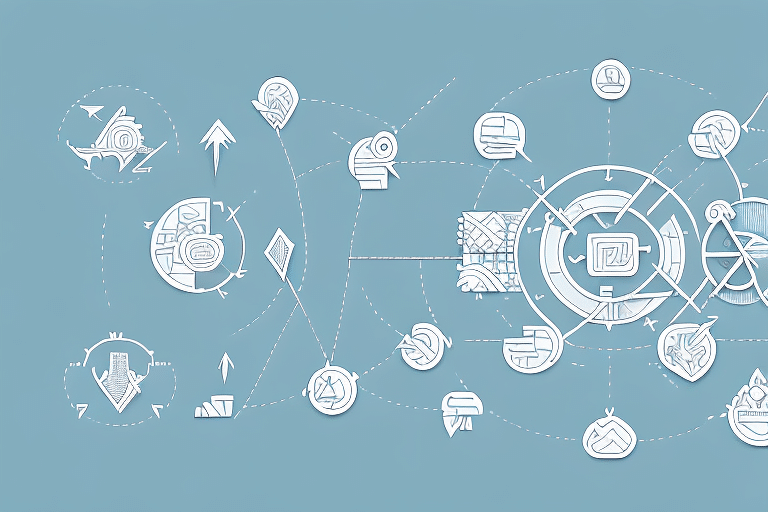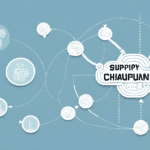Understanding the Concept of Reverse Supply Chain
A reverse supply chain operates in the opposite direction of a traditional supply chain, managing the flow of products or materials from the end user back to the manufacturer or supplier. This process can be initiated for various reasons, including:
- Product recalls
- Repairs and maintenance
- Handling damaged or defective goods
- Managing returns and excess inventory
By efficiently managing these returns, companies can:
- Minimize costs
- Reduce waste
- Streamline operations
Moreover, a well-structured reverse supply chain contributes positively to environmental sustainability. Reusing or recycling materials helps lower carbon footprints and supports a circular economy, which is increasingly important in today’s eco-conscious market.
The Importance of Reverse Logistics in Sustainability Efforts
Reverse logistics plays a pivotal role in a company's sustainability initiatives. Effective reverse logistics can:
- Reduce waste by recovering and reusing products or materials
- Lower disposal costs and environmental impact
- Enhance brand image and attract environmentally conscious consumers
According to a U.S. Environmental Protection Agency report, sustainable waste management practices can significantly decrease environmental pollution and conserve natural resources.
Additionally, analyzing returned products provides insights into product design and manufacturing processes, allowing companies to identify inefficiencies and areas for improvement. This continuous feedback loop fosters a more sustainable and cost-effective supply chain over time.
How a Reverse Supply Chain Can Help You Save Money
Implementing a reverse supply chain can lead to substantial cost savings for businesses by:
- Identifying and addressing root causes of returns, such as product defects or packaging issues
- Reducing the need for new raw materials through recycling and reusing
- Recouping costs through the resale of refurbished or returned products
- Outsourcing logistics to third-party providers to minimize in-house expenses
Studies from the Forbes Technology Council highlight that companies utilizing reverse logistics can improve their bottom line by optimizing inventory management and reducing waste disposal costs.
The Role of Technology in Optimizing Reverse Supply Chain Operations
Technology is integral to enhancing the efficiency of reverse supply chains. Key technological advancements include:
Automated Tracking Systems
Automated tracking allows companies to monitor shipments in real-time, improving inventory management and reducing losses. Tools like RFID and barcode scanning provide precise tracking from origin to destination.
Data Analytics
Data analysis tools help businesses identify trends in returns, enabling proactive measures to reduce future returns and improve product quality.
Artificial Intelligence and Machine Learning
AI and machine learning models can predict return patterns by analyzing customer behavior, allowing companies to address potential issues before they result in returns.
According to a report by McKinsey & Company, predictive analytics can enhance supply chain resilience and operational efficiency.
Blockchain Technology
Blockchain offers a secure and transparent method for tracking products throughout the supply chain, ensuring authenticity and streamlining the returns process.
Implementing a Successful Reverse Supply Chain Strategy: Tips and Best Practices
To establish an effective reverse supply chain, businesses should consider the following strategies:
Customer-Centric Approach
Understand and align with customer needs by providing a seamless and transparent returns process, which can enhance customer satisfaction and loyalty.
Process Evaluation and Improvement
Regularly assess reverse logistics processes to identify inefficiencies and areas for automation or better data management.
Clear Communication Channels
Establish straightforward return policies and provide customers with clear instructions to minimize confusion and streamline the return process.
Sustainable Practices
Incorporate recycling, refurbishing, and reselling strategies to reduce waste and create additional revenue streams from returned products.
Implementing these practices not only supports sustainability but also contributes to long-term cost savings and operational efficiency.
Measuring the Success of Your Reverse Supply Chain: Key Performance Indicators
To continuously optimize a reverse supply chain, it is essential to track and analyze key performance indicators (KPIs). Important KPIs include:
Return Rate
The percentage of products returned by customers. A high return rate may indicate issues with product quality or customer satisfaction.
Cost Per Return
Calculating the average cost associated with processing each return helps in budgeting and identifying cost-saving opportunities.
Processing Time
The average time taken to process a return, from initiation to resolution. Shorter processing times can enhance customer satisfaction.
Resale Rate
The percentage of returned products that are resold. A higher resale rate suggests efficient processing and refurbishment processes.
According to research by Harvard Business Review, tracking these KPIs provides actionable insights to improve both the efficiency and sustainability of the reverse supply chain.
Common Challenges and Solutions in Building an Effective Reverse Supply Chain
Developing a robust reverse supply chain comes with its set of challenges, including:
Inventory Management
Handling returned products requires efficient inventory management to prevent stock discrepancies and optimize storage.
Transportation Costs
Managing the costs associated with transporting returned goods can be significant. Partnering with third-party logistics providers can mitigate these expenses.
Regulatory Compliance
Ensuring that returned products meet regulatory standards is crucial to avoid legal issues and maintain consumer trust.
Quality Control of Returns
Implementing rigorous inspection processes ensures that returned products are appropriately refurbished or recycled.
Solutions to these challenges include:
- Collaborating with experienced logistics partners
- Investing in advanced inventory management systems
- Establishing clear compliance protocols
- Offering incentives for customers to return products in good condition
Case Studies: Real-life Examples of Successful Reverse Supply Chains
Several companies have effectively integrated reverse supply chains to enhance sustainability and reduce costs:
Dell
Dell’s closed-loop supply chain recycles old computers and components to manufacture new products, significantly reducing electronic waste.
IKEA
IKEA’s return and reuse program allows customers to return unused furniture, which is then refurbished or recycled, promoting a circular economy.
Nike
Nike’s Reuse-A-Shoe program collects old athletic shoes and repurposes them into materials for sports surfaces and equipment, minimizing waste.
Patagonia
Patagonia’s Worn Wear program encourages customers to bring in used clothing for repair, resale, or recycling, fostering customer loyalty and sustainability.
These case studies illustrate the tangible benefits of implementing an effective reverse supply chain, including cost savings, enhanced brand reputation, and environmental stewardship.
The Future of Reverse Logistics: Trends and Predictions
The landscape of reverse logistics is evolving, with several key trends shaping its future:
Increased Automation and AI Integration
Automation and artificial intelligence will continue to enhance the efficiency of reverse supply chains by predicting return patterns and optimizing processing workflows.
Blockchain Adoption
Blockchain technology will provide greater transparency and security in tracking returned products, ensuring authenticity and streamlining documentation processes.
Enhanced Sustainability Initiatives
Companies will further integrate sustainable practices into their reverse logistics, focusing on reducing waste and promoting the circular economy.
Consumer Behavior Analytics
Advanced analytics will enable businesses to better understand consumer behavior, allowing for more personalized and efficient return processes.
Overall, the future of reverse logistics is set to be more technologically driven and sustainability-focused, making it an integral component of modern supply chain management.
Conclusion
Implementing a well-managed reverse supply chain offers numerous benefits, including enhanced sustainability, cost savings, and improved customer satisfaction. By leveraging technology, adopting sustainable practices, and continuously measuring performance through key indicators, businesses can optimize their reverse logistics processes to stay competitive in a dynamic market. As the industry continues to evolve, embracing these strategies will be crucial for long-term success and environmental responsibility.








